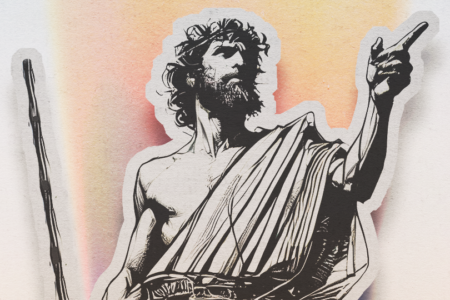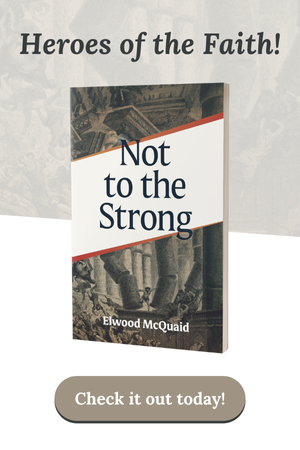The Common People Heard Him Gladly
Today many people are confused by the differing sects and denominations of Christendom. This is not a new situation. During the days of the New Testament, Judaism also was divided into many various sects. Jesus encountered all of these in one way or another in His ministry.
The Pharisees were the custodians of the oral law. They placed great emphasis on the traditions that were handed down to them through the years. Also, they were concerned with how to observe the law. Many detailed laws were added by them to help them keep the original law.
The Sadducees were not concerned with the oral law but put great emphasis on the written law, the Torah, which comprised the first five books of Moses. They did not believe in angels, nor spirits, nor the resurrection because they claimed such doctrines could not be found in the books of Moses.
The Essenes were another ascetic group who withdrew to the desert and believed that they were the only chosen of God. They were awaiting the final judgment in which their enemies would be destroyed. Many think that the settlement at Qumran and the Dead Sea Scrolls originated with the Essenes.
The Zealots were a religious political party who resisted strongly the Roman occupation and rule. Simon, one of Jesus’ disciples, was a follower of this sect at one time. There were many other groups and organizations in the first century, but these were the main ones.
The People of the Land, or Am ha aretz, as the Pharisees referred to them, were the vast majority of Jews who did not affiliate with any of these organized brotherhoods. This group of people might be called the common folk or the uneducated masses. At times the term Am ha aretz was used simply as a synonym for “ignoramus”.
What did the “people of the land” believe? What was their life like, and most important, how did this group of people respond to the message of Jesus?
The people of the land were the masses in Israel who did not conform to the pharisaic requirements in their observance of religious duties. The Talmud states that the “people of the fand” were those who had not “associated with the wise in order to learn the practice of the oral law.” The attitude of the Pharisees toward the people of the land was one of utmost condemnation. They detested them because they did not follow all the detailed rules that the Pharisees had established. Such an attitude is exemplified by the statement of the great Hillel when he remarked, “No person of the land can be pious.” There is a statement in one of the tractates of the Talmud stating that there were “synagogues of the people of the land, but they were to be avoided.” A synagogue of the people of the land was one of those things that “draws a man away from the straight path of piety.”
Probably the strongest condemnation of this group of common people is that of Rabbi Eleazar who said, “It is lawful to stab a person of the land on a day of atonement that falls on a Sabbath.” Said his disciples, “You mean to slaughter him?” “No,” he replied, “slaughtering requires a benediction, stabbing does not.” Though this may be an overstatement on the part of Rabbi Eleazar, it does indicate the abhorrence with which the Pharisees viewed the common people. This attitude toward the people of the land helps us to better understand a number of statements in the Gospels and also provides a fascinating background to the messianic message of Jesus.
One of the strongest reasons for the Pharisees condemnation of our Lord Jesus was that He was “… a friend of publicans and sinners” (Mt. 11:19; Lk. 7:34). The word “sinners” refers to the people who did not observe the law in detail. Jesus ate with “sinners” and was condemned for it Mt. 9:11; Mk. 2:16; Lk. 5:30; 15:2). It was in a Pharisee’s house that a woman who was a “sinner” came to Him. This woman washed the feet of Jesus with her tears, and the Pharisee condemned Jesus for associating with her (Lk, 7:36-39).
As a matter of fact, Jesus, himself, was considered as one of the “sinners”. The Pharisees referred to Him in this way in John 9:16 when they questioned, “How can a man that is a sinner do such miracles?” Jesus must have angered the so-called righteous ones of His generation when He told them that He did not come to “call the righteous, but sinners to repentance” (Mt. 9:13). In other words, He was saying, “I came not to call the Pharisees but the common people, for they are the ones who receive me.”
In Mark 12:37. after Jesus claimed to be the Messiah, we read that “… the common people heard him gladly.” This is in contrast to the sophisticated group of Pharisees and Sadducees who strongly rejected Him as not being worthy of their consideration. In the seventh chapter of the Gospel of John, following Jesus’ teaching at the Feast of Tabernacles, there was a discussion about whether or not He was the Messiah. There were many people who believed that He was the promised Prophet and the Christ (Jn. 7:40-44). When news of this came to the Pharisees, they asked why this man had not been brought in by the officers to be judged. They questioned, “Are ye also deceived? Have any of the rulers or of the Pharisees believed on him? But this people who knoweth not the law are cursed (Jn. 7:47-49). The Pharisees were referring to the accursed “people of the land”, who in their opinion did not keep the law. However, it was the people of the land who responded to Jesus more than any other. They had not been blinded by tradition. They were often simply believers in the God of Israel and the Scriptures though they did not know all of the oral law that the Pharisees expounded. The sad thing is that many of the common people had more spiritual perception than the educated ones.
One of the most fascinating statements of our Lord Jesus that confirmed His Messiahship was His answer to John the Baptist when John had serious doubts about Him. In Matthew 11:3 John’s disciples asked Him, “Art thou he that should come, or do we look for another?” The answer that Jesus gave to them embodied a number of signs by which they would know that the Messiah had come. “Jesus answered and said unto them. Go and show John again those things which ye do hear and see: The blind receive their sight, and the lame walk, the lepers are cleansed, and the deaf hear, the dead are raised up, and the poor have the gospel preached to them” (Mt. 11:4-5). This was something new. No one had ever taken so much interest in the poor. They had been the despised, the rejected, the ignoramuses; however, there was One who not only performed miracles, but had good news for the people who were despised, it was from this large group of the people of the land that many of the believers in Jesus came.
One is struck by statements in the Gospels about the large number of people who were following Jesus in Galilee but who seemed to have disappeared by the last week of His life. Certainly there were many who followed because they had their stomachs filled. There were others, such as the Zealots, who followed Him because they expected a messianic conqueror to defeat the Romans. When He proved not to be that Messiah, they also drifted away. However, there were many who did want to follow Him. Yet, the leaders, the policy-makers, and those who engineered His arrest and crucifixion at the hands of the Romans were not of this group.
Following the death, resurrection and ascension of the Lord, the Spirit of God came at Pentecost. Peter preached, and thousands were saved. It is interesting to note that the Pharisees and Sadducees also despised these early followers of Jesus. Acts 4:13 states, “Now when they saw the boldness of Peter and John, and perceived that they were unlearned and ignorant men, they marvelled; and they took knowledge of them, that they had been with Jesus.” The words “unlearned and ignorant” are technical terms that refer to those who were uneducated and untrained. The statement was not to condemn the intellectual capacities of Peter and John but to condemn them because they were not formally trained in the pharisaic schools. Yet, even though untrained and not particular about the details of keeping the oral law, Peter, John and others of the people of the land had the spiritual perception to see in the Lord Jesus what the blind eyes of the religious leaders were unable to see. Christ was the One who was the Friend of sinners. He was the One who preached the good news to the poor, and thus they heard Him gladly.
Paul, an educated Pharisee whose eyes were opened by the grace of God, recognized that it was not education and social attainment that earned any of his favor with God. He states it very clearly in 1 Corinthians 1:26-29: “For ye see your calling, brethren, how that not many wise men after the flesh, not many mighty, not many noble, are called; But God hath chosen the foolish things of the world to confound the wise; and God hath chosen the weak things of the world to confound the things which are mighty; And base things of the world, and things that are despised, hath God chosen, yea, and things which are not, to bring to nothing the things that are. That no flesh should glory in his presence.”
Queen Victoria, the nineteenth-century British monarch, was an ardent believer in the Lord Jesus Christ. She is reported to have said that she “was saved by an M”. When asked what she meant, she replied, “How thankful I am that the verse says ‘not many noble are called’ rather than ‘not any noble are called.’ ”
There is no particular virtue in being ignorant. That is not the point of this truth concerning the “people of the land”. What is true, however, is that educational attainments like those of the Pharisees and Sadducees did not qualify them to see the Messiah. Often the simple people, whose minds and hearts have not been cluttered by human wisdom, are able to perceive the Lord Jesus as the Messiah of Israel. Jesus today still does not “call the righteous but sinners to repentance”. His invitation to be saved is not to those who, like the proud Pharisee, brag about their self-righteousness; but His salvation is “for those who, like the publican, cry out “be merciful to me a sinner” (Lk. 18:13).
Have you bowed in humble acknowledgement that you are a sinner in need of salvation and forgiveness which Jesus offers? As long as you pride yourself in your wisdom, your knowledge and your intellectual and social achievements, Jesus will have no attraction for you, In contrast, if you see yourself the way the blind man saw himself, you qualify “For the salvation that Jesus has to offer. After having his sight restored he was questioned thoroughly by the Pharisees. They said that this man was a sinner. The blind man answered and said, “Whether he is a sinner or not, I know not; one thing I know, that, whereas I was blind, now I see” (Jn. 9:25). The blind man had received physical sight. The Pharisees, though they had physical sight, remained in their blindness.
How long will you remain in your blindness, my friend? Will you acknowledge your spiritual blindness and come to the only One who can shine upon your dark eyes and heart and give you the light of salvation?







